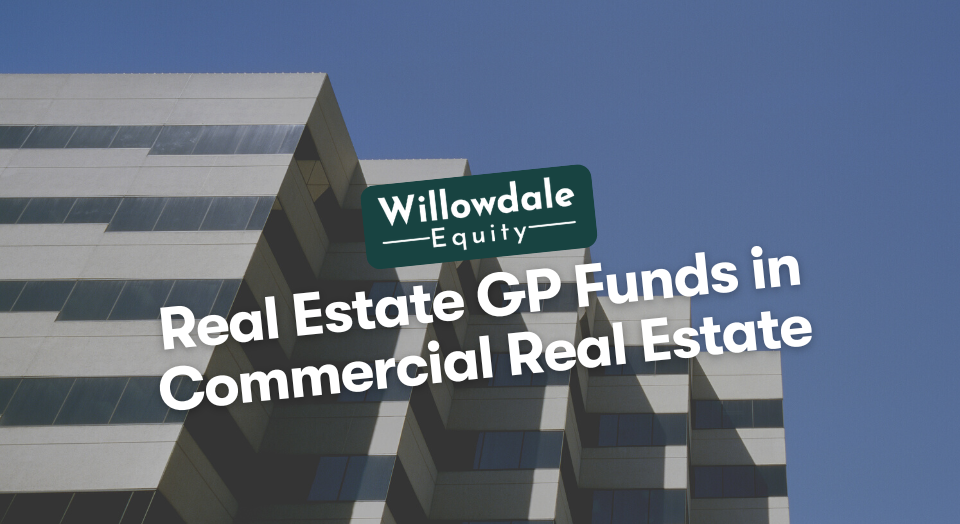
What is LP and GP in Private Commercial Real Estate Investing?
This article is part of our passive investors guide on real estate syndications, available here.
It’s one of those early questions that can help aspiring investors decide where to pivot their energies. In this article, I’ll cover what you need to know to understand these two roles in a limited liability partnership and in real estate syndications.
Key Takeaways
-
Private equity real estate transactions tied to funds and syndications are structured using two rules for its members, a general partner (GP) and a limited partner (LP).
-
The GP is the driving force of property investment. The general partner handles all aspects of managing properties, performing due diligence, underwriting, serving tenants, managing partnership tax obligations, and paying out cash distributions. They also take on most of the liability associated with a partnership.
-
LP investment is a form of passive investment that comes with a heavy shield against liability. It is considered a much “neater” way to invest in real estate compared to becoming a single landlord.
-
LP investing is beneficial because it opens up investment opportunities that would be impossible for a single investor who isn’t already a multi, multi, multi-millionaire.
What is LP and GP?
Private equity real estate transactions tied to funds and syndications are structured using two rules for its members, a general partner (GP) and a limited partner (LP). You can describe these roles as being both opposite and complementary.
The GP is the driving force of property investment. The general partner handles all aspects of managing properties, performing due diligence, underwriting, serving tenants, managing partnership tax obligations, and paying out cash distributions. They also take on most of the liability associated with a partnership. There are also benefits to being a general partner, like earning a management fee and carried interest. Of course, when interacting with investors, financers, clients, or the IRS, general partners are also the face of a partnership.
Rather than managing the operations of the real estate project, the limited partner provides a capital contribution to help fund the project and in return, would see some level of upside in the deal’s performance. For many investors who lead busy lives with full-time jobs, a limited partner role is the best way to get into the commercial real estate investing world without having to reinvent their lives entirely.
There’s essentially no time commitment to being a limited partner investor aside from the initial due diligence that the LP would perform to make sure they believe in the business plan and that this is the right investment opportunity for them.
Next, I’ll go deeper into what LP investment looks like in real-world settings to show why passive income through real estate is becoming a popular option among people looking to diversify away from stock-only portfolios.
What is LP Investment?
LP investment is a form of passive investment that comes with a heavy shield against liability. It is considered a much “neater” way to invest in real estate compared to becoming a single landlord. Historically, the only way an average person could invest in real estate was to find a suitable property in as hot a market as you could afford. Next, you’d pour money and energy into fixing the property to make it habitable for tenants.
This begins the never-ending cycle of constantly attracting quality tenants, collecting rent, making upgrades to the property, and being on call whenever tenants need assistance. In addition to it becoming your full-time job, being a landlord means you have most of your invested capital committed in a single property in the best market you can afford on your own.
Good Read: What is a Real Estate GP Fund in CRE?
Why Is LP Investing Beneficial?
LP investing is beneficial because it opens up investment opportunities that would be impossible for a single investor who isn’t already a multi, multi, multi-millionaire. Next, we’ll cover some unique benefits of using partnerships to invest in commercial and multifamily properties.
1.) Access to Better Properties

LP investing channels into the power of the collective investor to get “normal” people into highly lucrative markets by owning parts of revenue-generating, appreciating properties. Moreover, the properties available to you as an LP investor have already been carefully vetted based on market fundamentals, area demographics, interest rate and cap rate sensitivity, and risk vs. reward. Only after that can an opportunity be deemed lucrative and risk-adjusted.
GPs use their extensive channels to analyze market data and work with select brokers to source quality properties with targeted future growth potential. This is a far cry from the “shot in the dark” approach for buying any affordable property that comes on the market used by most first-time property investors.
Ultimately, amateur investors get access to professional analysis when they become part of a partnership.
2.) Protection Against Inflation

Americans are currently being rocked by inflation. The tight market makes it harder for single investors to snatch up quality properties. LP investors get an advantage because they get to join the “big fish” in the pond when it comes to making offers and doing quality deals with real future value.
While inflation creates a mess for both single investors and renters, LP investors get to ride out the storm on two fronts. In addition to having buying power due to strength in numbers, they also enjoy the benefits of rising rents to keep pace with inflation. That can make rental income a more dependable income stream than W-2 income, contractor income, or stocks.
The tight housing market is also causing more and more people to “stay put” in rentals instead of jumping into houses of their own in some markets. Property investors can have access to long-term, stable tenants instead of incurring losses from recurring vacancies.
3.) Risk Diversification
LP investing can be a shelter against a turbulent stock market. When times get rough, institutional investors like private equity firms, hedge, and pension funds begin to look toward tangible assets with potential for appreciation. Real estate is always a default investment strategy because shelter is a core human need and is generally among the last cuts people make in their budget when their disposable income is constrained. While variables can make a stock irrelevant overnight, homes and buildings will still serve the same purposes they did before a bad day on the stock market.
While many people continue investing in stocks when diverting some of their capital to real estate, the diversification angle makes LP investing attractive. In an LP investment position, you aren’t pouring unpredictable amounts of your own money into keeping up with a property every month, which means you have more predictable capital to invest into stocks for extraordinary diversification between real estate and stocks based on their risk tolerance.
4.) Tax Benefits

Limited partners enjoy unique tax benefits that allow them to share in all the “paper losses” from the property to offset gains. One of the things that few people outside of the investment world know is that property investing doesn’t just generate an income solely through rent.
While owning a profitable rental property can set a person up for living entirely off of passive income, the tax benefits of investing in commercial real estate assets like multifamily are the bedrock of how many become independently wealthy. Some high active earning individuals simply invest in large commercial real estate assets to lower their tax burden. They do this by leveraging the large depreciation that can be utilized through accelerating “paper losses” in the first year of commercial property ownership.
For savvy property investors, there are also options for using a real estate professional loophole to use losses from an investment property to offset earned income from W-2 work, independent contractor work, and other income sources.
5.) Consistent Dividends
The “passive” part of passive investment means checks show up regularly. Real estate partnerships pay out monthly or quarterly cash distributions that provide LPs with predictable passive revenue streams. Next, I’ll cover some of people’s most common questions about LPs and GPs.
Frequently Asked Questions About LP’s and GP’s
LP funds work by merging the “work” of GPs with the capital infusion from LPs. LPs enjoy consistent passive income generated from commercial and multifamily properties without any hands-on management. In addition, an LP’s liability is limited based on the size of their initial investment regardless of how large the total investment becomes.
An LP in a private equity firm refers to “limited partner.” A limited partner is an investor who provides capital for investment in exchange for dividends.
LP and GP in Private Real Estate- Conclusion
LP investments represent some of the most flexible and advantageous investment conditions available. While GPs handle all management tasks associated with generating profits from a property, LPs can enjoy the peace of mind that comes with consistent cash distributions with very low liability.
LP investing provides both the access and freedom to pour capital into multiple projects without trying to “live off” a single make-or-break property for investors seeking a way to invest in much larger or multiple properties.
Join the investor club at Willowdale Equity to get behind-the-scenes access to private LP investment opportunities in value-add multifamily properties across the southeastern United States.
Sources:
Interested In Learning More About PASSIVE Real Estate Investing In Multifamily Properties?
Get Access to the FREE 5 Day PASSIVE Real Estate Investing Crash Course.
In this video crash course, you’ll learn everything you need to know from A to Z
about passive investing in multifamily real estate.
We’ll cover topics like earned income vs passive income, the tax advantages, why multifamily, inflation, how syndications work, and much much more!




